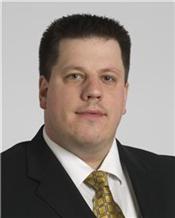Program Information
Technique Factor Modulation and Reference Plane Air Kerma Rates in Response to Simulated Patient Thickness Variations for a Sample of Current Generation Fluoroscopes
K Wunderle1*, J Rakowski2 , F Dong3 , (1) Cleveland Clinic Foundation, Cleveland, OH & Wayne State University School of Medicine, Detroit, MI (2) Wayne State University School of Medicine, Detroit, MI (3) Cleveland Clinic Foundation, Cleveland, OH
Presentations
SU-E-P-15 (Sunday, July 12, 2015) 3:00 PM - 6:00 PM Room: Exhibit Hall
Purpose:To evaluate and compare approaches to technique factor modulation and air kerma rates in response to simulated patient thickness variations for four state-of-the-art and one previous-generation interventional fluoroscopes.
Methods:A polymethyl methacrylate (PMMA) phantom was used as a tissue surrogate for the purposes of determining fluoroscopic reference plane air kerma rates, kVp, mA, and spectral filtration over a wide range of simulated tissue thicknesses. Data were acquired for each fluoroscopic and acquisition dose curve within a default abdomen or body imaging protocol.
Results:The data obtained indicated vendor- and model-specific variations in the approach to technique factor modulation and reference plane air kerma rates across a range of tissue thicknesses. Some vendors have made hardware advances increasing the radiation output capabilities of their fluoroscopes; this was evident in the acquisition air kerma rates. However, in the imaging protocol evaluated, all of the state-of-the-art systems had relatively low air kerma rates in the fluoroscopic low-dose imaging mode as compared to the previous-generation unit. Each of the newest-generation systems also employ copper filtration in the selected protocol in the acquisition mode of imaging; this is a substantial benefit, reducing the skin entrance dose to the patient in the highest dose-rate mode of fluoroscope operation.
Conclusion:Understanding how fluoroscopic technique factors are modulated provides insight into the vendor-specific image acquisition approach and provides opportunities to optimize the imaging protocols for clinical practice. The enhanced radiation output capabilities of some of the fluoroscopes may, under specific conditions, may be beneficial; however, these higher output capabilities also have the potential to lead to unnecessarily high dose rates. Therefore, all parties involved in imaging, including the clinical team, medical physicists, and imaging vendors, must work together to ensure that adequate but not excessive radiation doses are used.
Contact Email:


